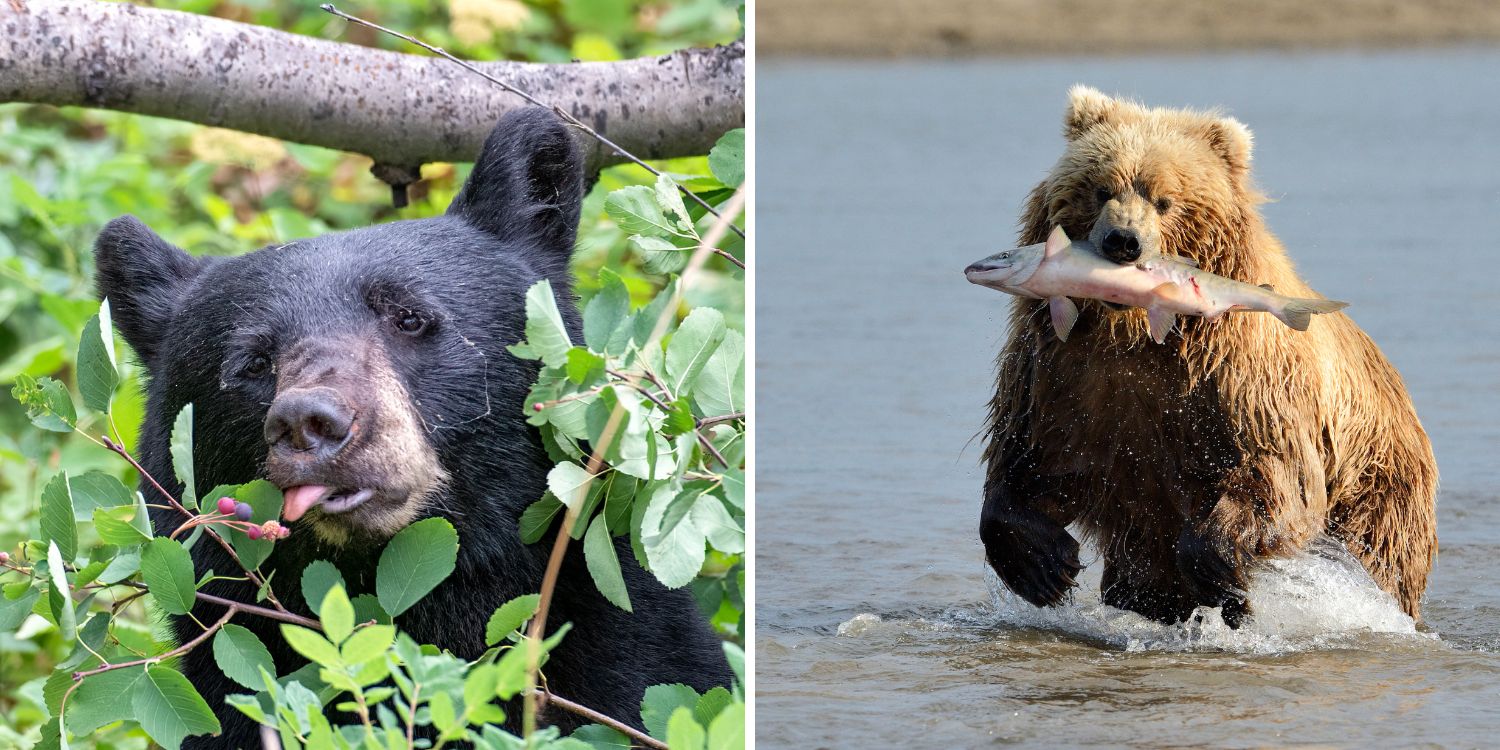
The conservation statuses of black bears and brown bears (grizzly bears) differ depending on the specific subspecies and location. Here’s a breakdown:
Black Bears:
- Least Concern (IUCN): The American black bear (Ursus americanus) is the most common black bear subspecies and is classified as “least concern” by the International Union for the Conservation of Nature (IUCN). This indicates a healthy population with a low risk of extinction.
- Variations by Region: While the overall population is stable, some black bear subspecies in specific regions may have different conservation statuses. For example, the Mexican black bear (Ursus americanus eremicus) is listed as “vulnerable” due to habitat loss and fragmentation.
Brown Bears (Grizzly Bears):
- Varied Status: Brown bears, particularly grizzlies, have a more complex conservation status.
- Grizzly Bear (Ursus arctos horribilis): The grizzly bear subspecies in the lower 48 states (US) is listed as “threatened” by the IUCN. Habitat loss, salmon populations, and conflict with humans are key threats.
- Brown Bear (Ursus arctos): Brown bears in other parts of North America, including Alaska and Canada, have healthier populations and are not currently considered endangered.
Overall:
Black bears are generally doing well, while brown bears, particularly grizzlies in the lower 48 states, face more conservation challenges. Habitat loss and fragmentation due to human development and encroachment are major threats for both species. Additionally, conflicts with humans, often due to encounters in backcountry areas, can lead to bear deaths.
Here are some organizations dedicated to bear conservation:
- International Union for the Conservation of Nature (IUCN) Bear Specialist Group
- The Nature Conservancy
- Grizzly Bear Foundation
By supporting these organizations and being aware of bear safety practices in bear country, we can help ensure the survival of these magnificent creatures for generations to come.






